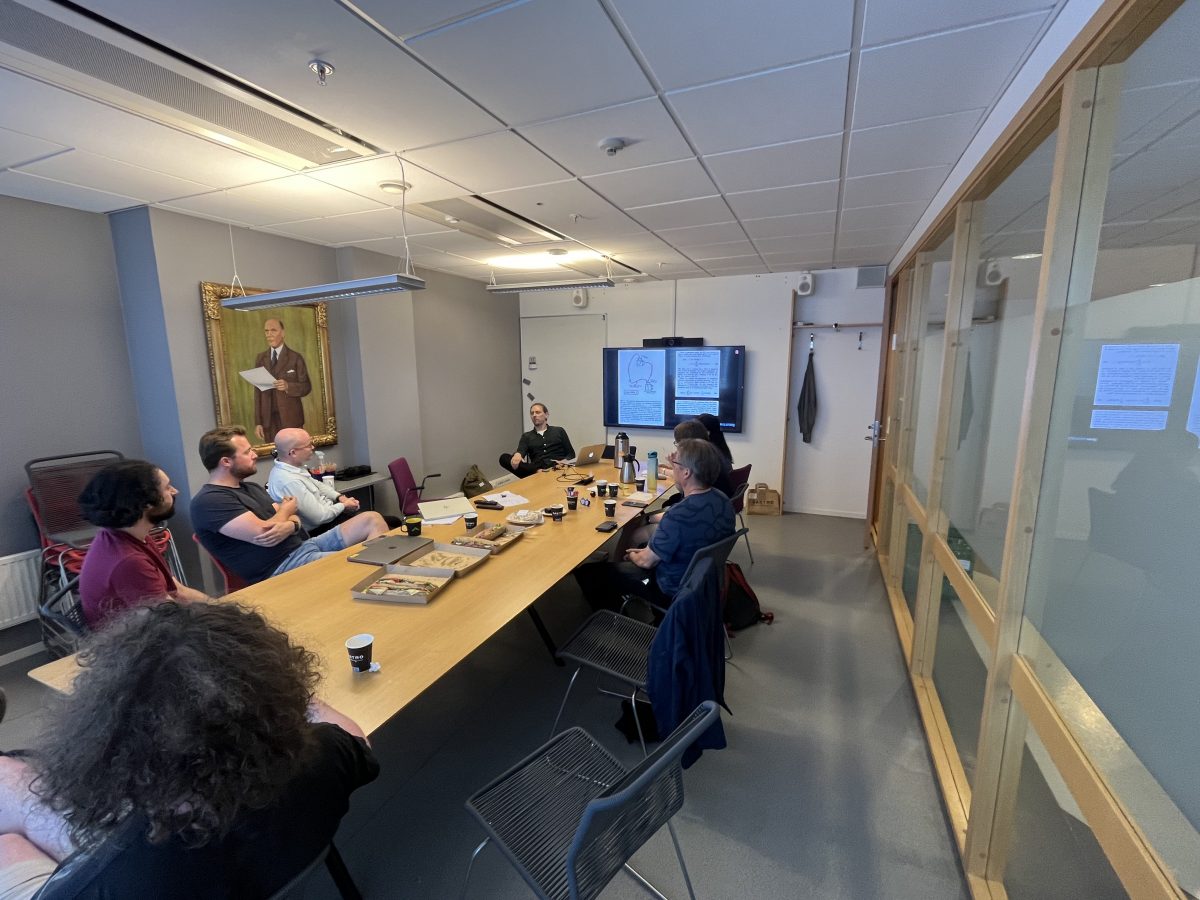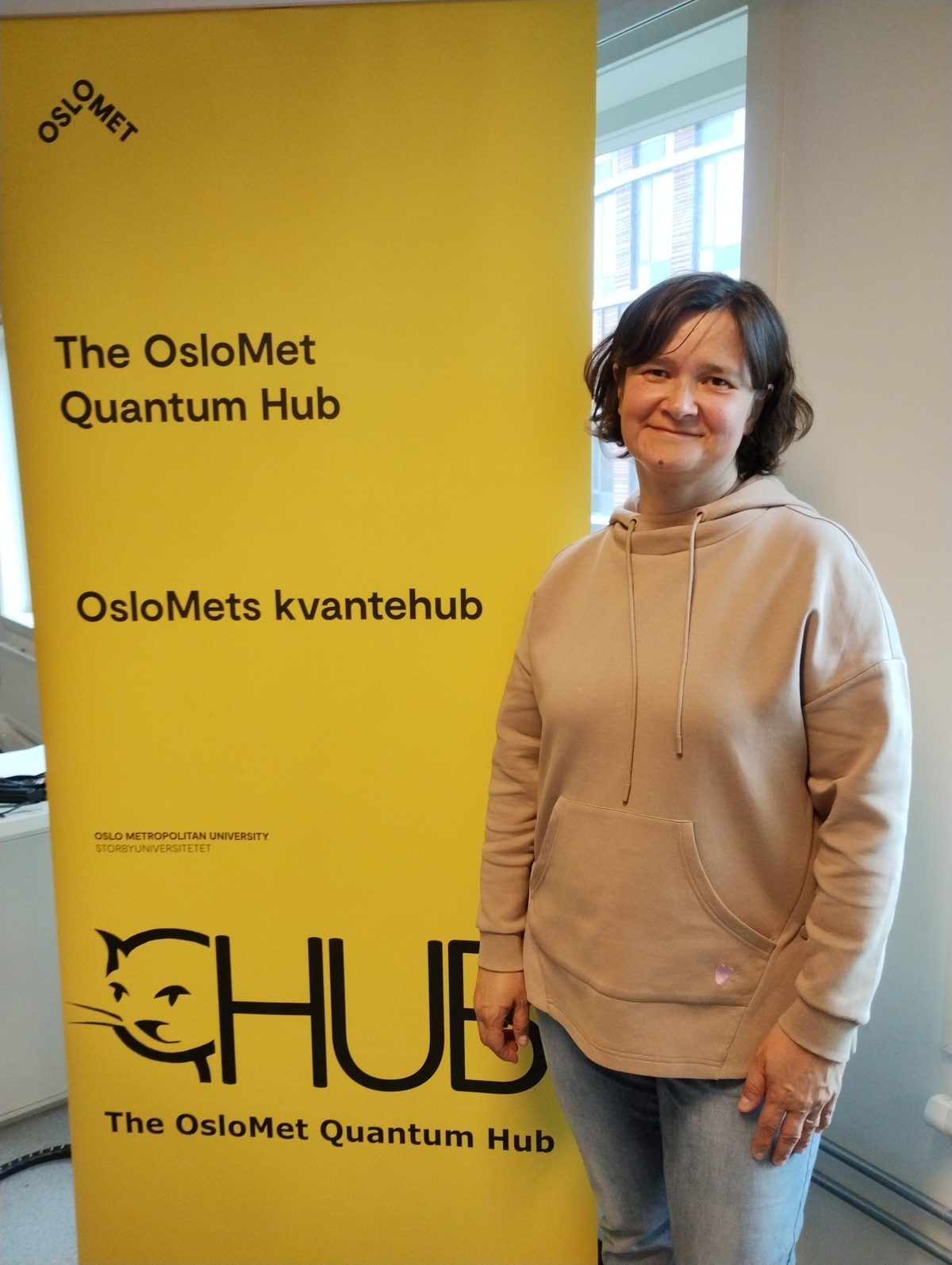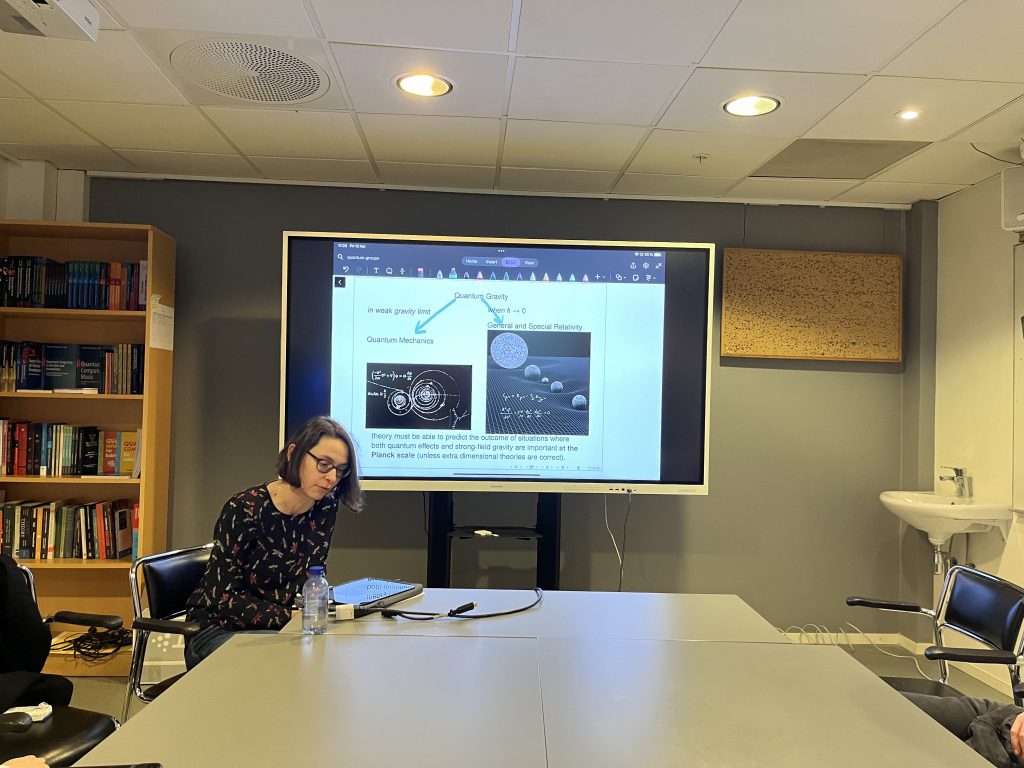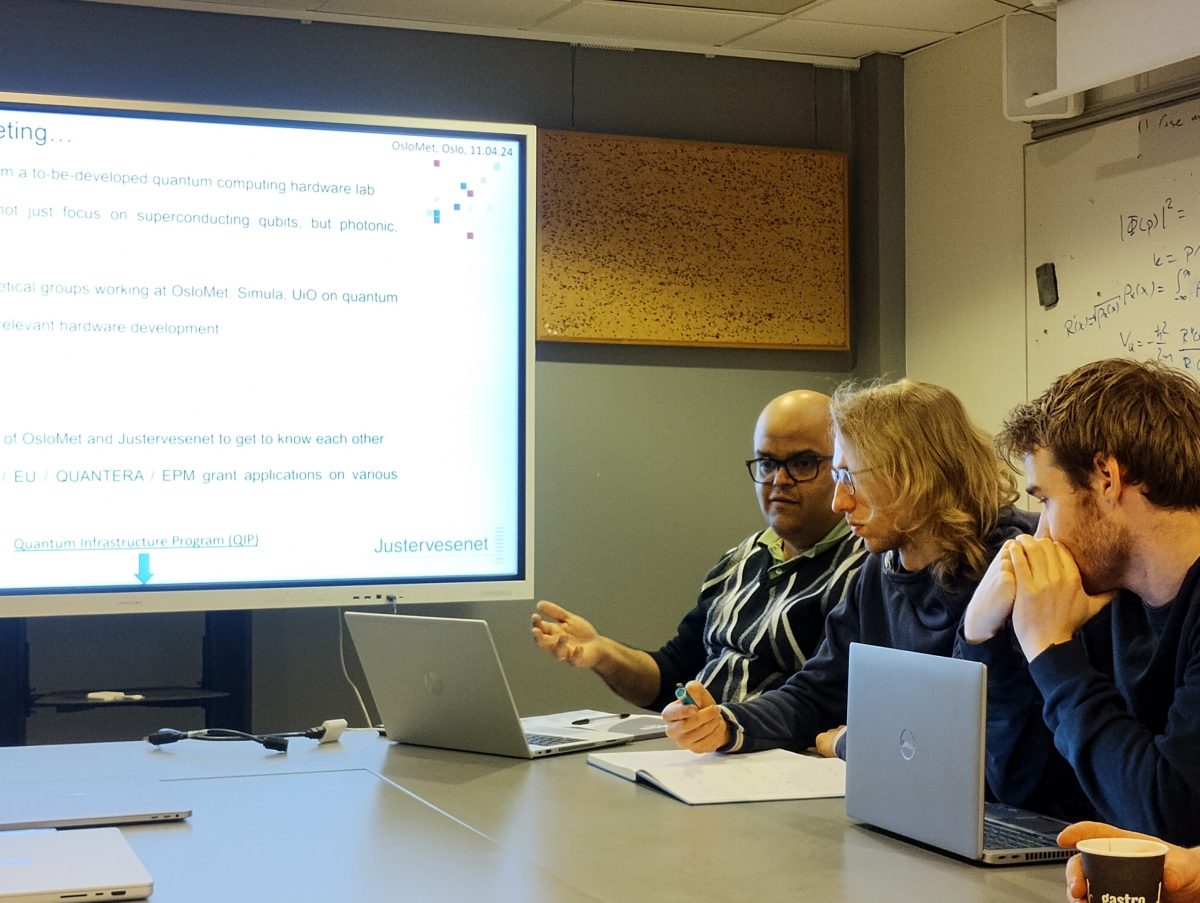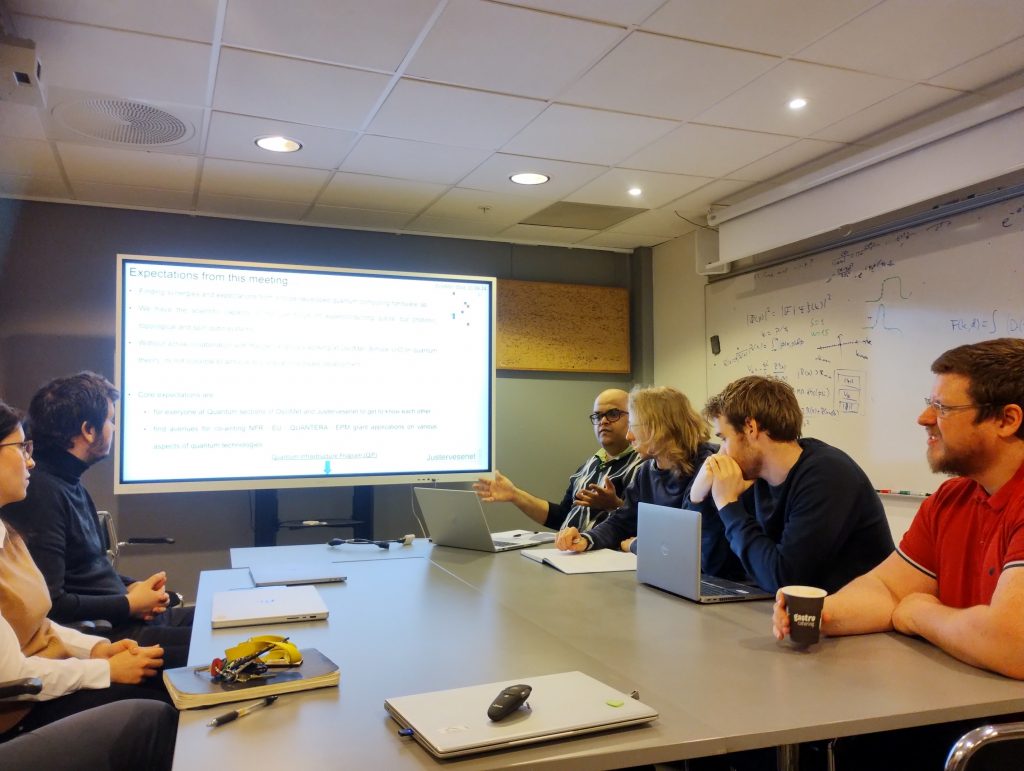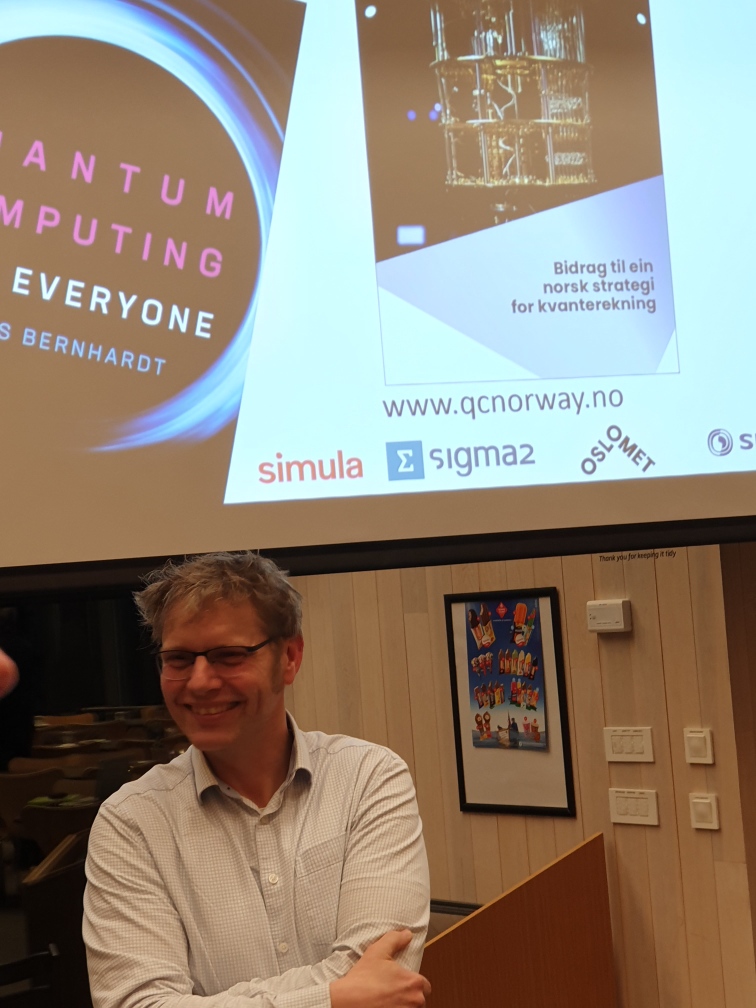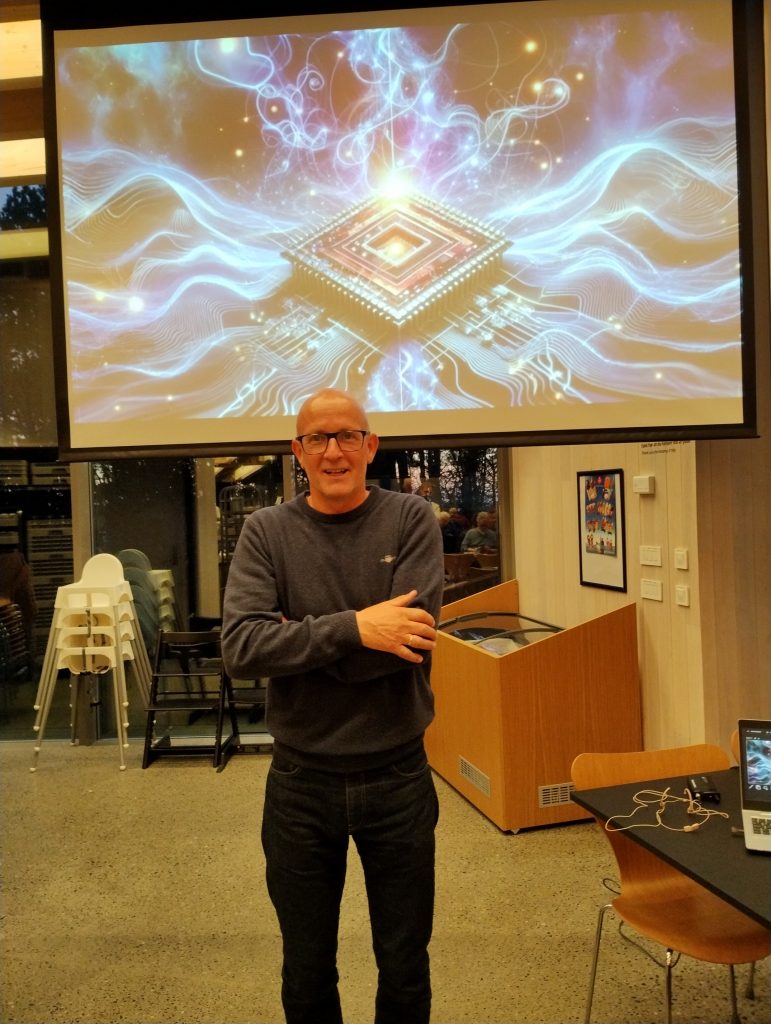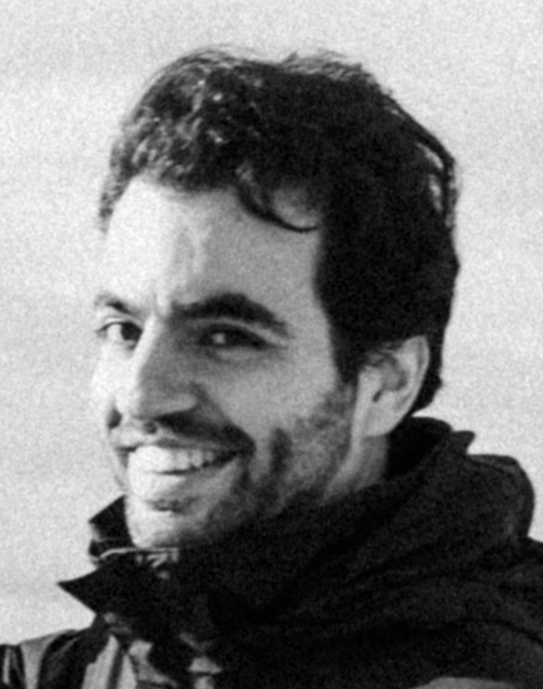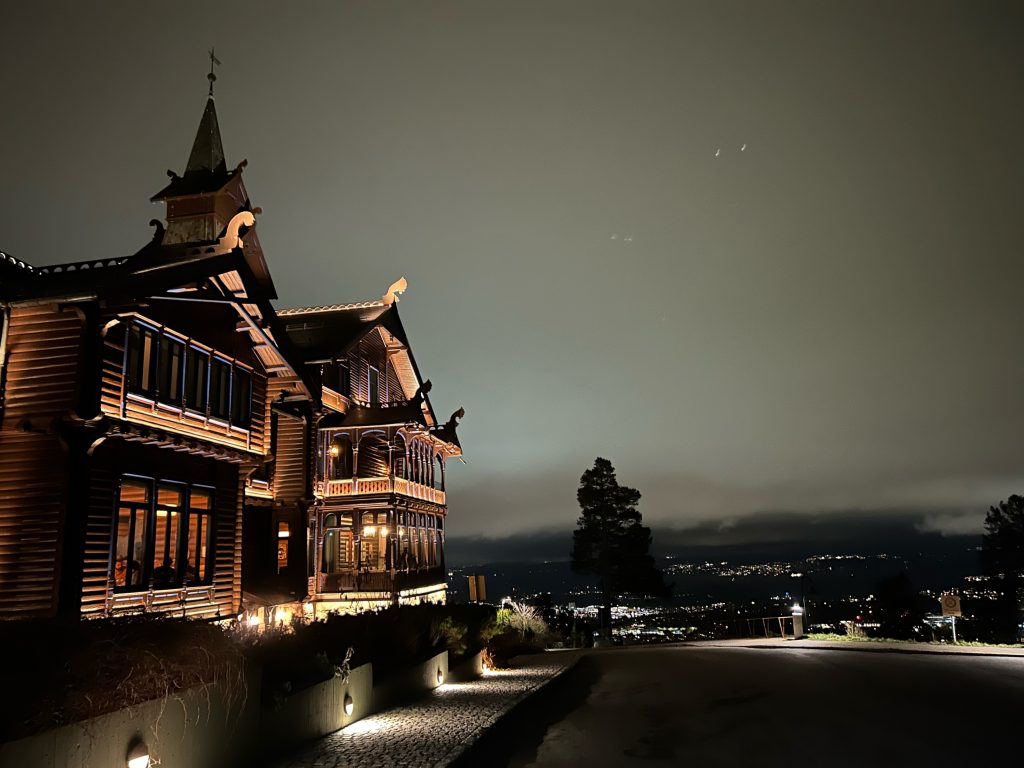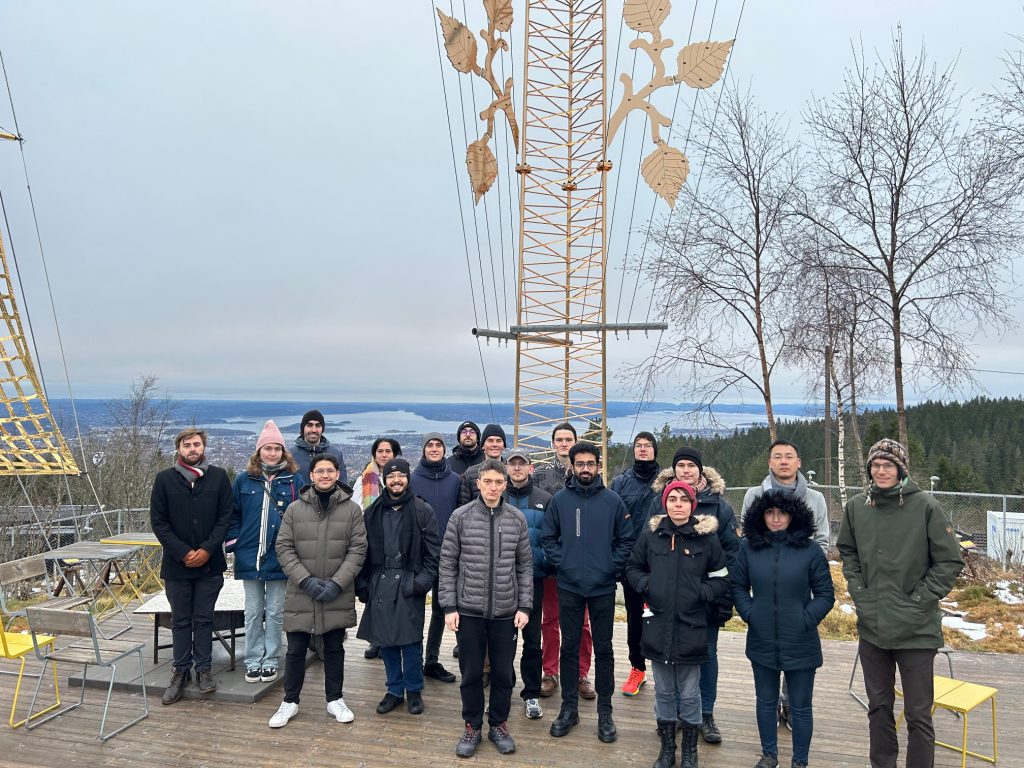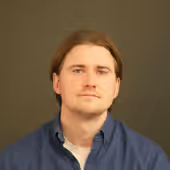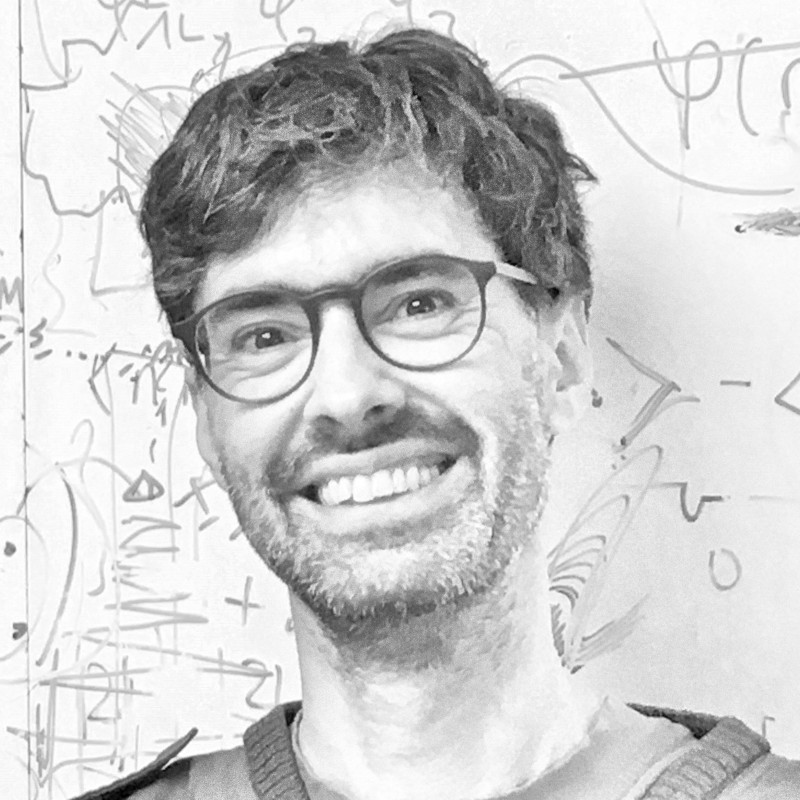QBism as introduced by Anders Kvellestad
This Friday, 28th of June, we have the pleasure of hosting Anders Kvellestad, from the University of Oslo, who gave us an introduction to QBism!
That is a relatively new interpretation of quantum mechanics that emphasizes the role of the observer in defining quantum states. QBism, or Quantum Bayesianism, interprets quantum probabilities as personal beliefs about the outcomes of measurements, rather than objective properties of physical systems.
His lecture was thought-provoking and sparked a lively discussion with numerous questions from the audience (see photo). We are looking forward to his second seminar after the summer break, where he will delve deeper into the intricacies of QBism.
